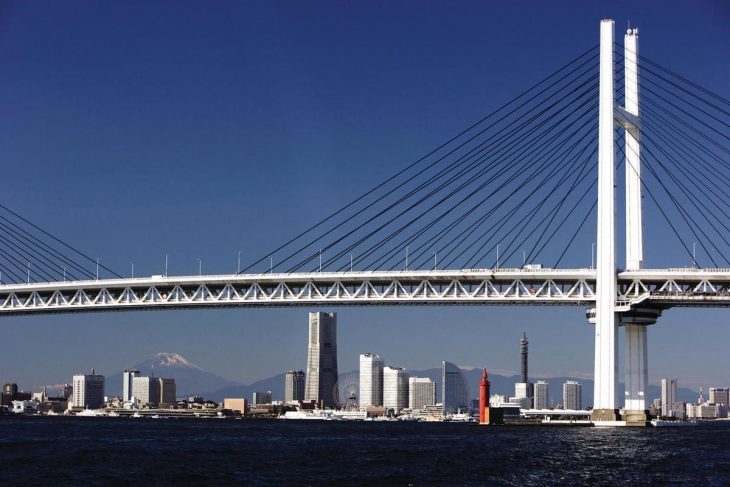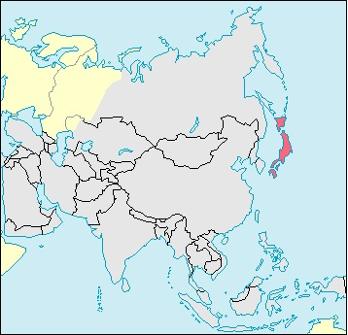What is the Capital of Japan? Tokyo

Capital City of Japan: Tokyo
City Overview
Tokyo, the capital city of Japan, is one of the most influential and vibrant cities in the world. Located on the eastern coast of Honshu Island, Tokyo is not only the political and economic center of Japan but also a cultural and technological hub. With a population exceeding 14 million in the city proper and over 37 million in the Greater Tokyo Area, it is the most populous metropolitan area in the world. Tokyo has been the political center of Japan since the Edo period (1603-1868) and was officially designated the capital of Japan after the Meiji Restoration in 1868 when Emperor Meiji moved the capital from Kyoto to Tokyo.
Tokyo is a city of contrasts, where traditional Japanese temples and shrines sit alongside towering skyscrapers, high-tech shopping malls, and futuristic architecture. It is famous for its unique blend of ancient traditions and cutting-edge modernity, offering a wide range of experiences to visitors—from tranquil gardens and historical sites to bustling shopping districts and neon-lit entertainment zones. Tokyo’s economy is one of the largest in the world, and it continues to drive technological advancements, making it a global leader in electronics, innovation, and finance.
The city’s landscape is defined by the Sumida River, as well as several large parks, such as Ueno Park, and districts like Shibuya, Shinjuku, and Akihabara, which are synonymous with youth culture, technology, and entertainment.
City Facts
- Area: Approximately 2,194 km²
- Population: Around 14 million (2023 estimate)
- Time Zone: Japan Standard Time (UTC+9) (No daylight saving time)
- Highest Mountain: Mount Fuji – Standing at 3,776 meters (12,389 feet), Mount Fuji is not only Japan’s highest peak but also a symbol of national pride and a UNESCO World Heritage site.
- Longest River: Shinano River – The Shinano River is Japan’s longest river, stretching over 367 kilometers (228 miles). It flows through several prefectures, including Nagano, and is an important water source for the country.
Tokyo is a global city that epitomizes the fusion of tradition and innovation, with rich cultural heritage sites alongside modern architectural marvels. The capital remains a major influence on global culture, technology, and fashion.
Major Landmarks in Tokyo
Tokyo is home to several iconic landmarks that represent the city’s deep history and modern advancements. Below are a few of the city’s most notable sites:
1. Tokyo Tower
Modeled after Paris’s Eiffel Tower, the Tokyo Tower is one of the city’s most famous landmarks. Standing at 333 meters (1,092 feet), it offers panoramic views of the city from its observation decks. The tower, completed in 1958, symbolizes Japan’s post-war rebirth and rapid modernization.
2. Senso-ji Temple
Located in the Asakusa district, Senso-ji is the oldest and most famous Buddhist temple in Tokyo. The temple, originally built in the 7th century, attracts millions of visitors annually. The Kaminarimon Gate at the entrance is a symbol of the temple, featuring large red lanterns and statues of gods.
3. Shibuya Crossing
Often referred to as the busiest pedestrian crossing in the world, Shibuya Crossing represents the fast-paced energy of Tokyo. Situated near Shibuya Station, it is a major commercial and entertainment hub, surrounded by large department stores, electronic shops, and restaurants.
4. Meiji Shrine
The Meiji Shrine, dedicated to Emperor Meiji and Empress Shoken, is located near the bustling districts of Harajuku and Shinjuku. The shrine is set within a lush, tranquil forest, offering a stark contrast to the urban environment of Tokyo.
5. Tokyo Skytree
The Tokyo Skytree is the tallest structure in Japan, standing at 634 meters (2,080 feet). It serves as a television broadcasting tower and offers spectacular observation decks with views of the city, Mount Fuji, and beyond. It is part of the Tokyo Skytree Town, which includes shopping, restaurants, and entertainment facilities.
6. Imperial Palace
The Imperial Palace, located in the Chiyoda district, serves as the residence of Japan’s emperor. The surrounding East Gardens are open to the public and feature historical buildings, bridges, and scenic landscapes. The palace complex is a significant symbol of the imperial family and Japanese history.
Climate Overview
Tokyo experiences a humid subtropical climate with distinct seasons: warm, humid summers and mild winters. The city’s location on the eastern coast of Japan means that it is occasionally impacted by typhoons during the summer and early autumn months. The climate is characterized by moderate rainfall, especially during the summer monsoon season.
Monthly Climate Overview
| Month | Average Temperature (°C) | Precipitation (mm) | Sunny Days |
|---|---|---|---|
| January | 5 | 45 | 7 |
| February | 6 | 50 | 8 |
| March | 10 | 90 | 10 |
| April | 14 | 90 | 15 |
| May | 18 | 120 | 18 |
| June | 22 | 155 | 12 |
| July | 26 | 145 | 14 |
| August | 27 | 165 | 13 |
| September | 24 | 190 | 10 |
| October | 17 | 130 | 14 |
| November | 10 | 65 | 16 |
| December | 6 | 45 | 8 |
Tokyo’s summers are hot and humid, with average temperatures reaching the low 30s°C (mid-80s °F). Rainy season (June and July) brings heavy rainfall, while winter temperatures range from 3°C to 10°C (37°F to 50°F), with occasional light snow.
Other Cities That Have Served as Capital in Japan’s History
Kyoto (794–1868)
Before Tokyo became the capital of Japan, the city of Kyoto was the imperial capital for over a millennium, from 794 to 1868. Kyoto was the center of Japanese culture, religion, and politics, and it is home to many of Japan’s most famous temples, shrines, and traditional tea houses. Despite the capital’s relocation to Tokyo, Kyoto remains one of Japan’s most important cultural cities.
Nara (710–784)
Prior to Kyoto, Nara was the capital of Japan from 710 to 784. Nara was established as the first permanent capital of Japan, and it was during this period that much of Japan’s early architecture and Buddhist culture flourished. The city is home to some of Japan’s oldest temples, including Todai-ji and Kofuku-ji.
Country Facts: Japan
General Country Information
- Population: 126 million (2023 estimate)
- Area: 377,975 km²
- Largest City: Tokyo
- Currency: Japanese Yen (JPY)
- Official Language: Japanese
- ISO Country Codes: JP (ISO 3166-1 alpha-2), JPN (ISO 3166-1 alpha-3)
- Government: Constitutional Monarchy
- Emperor: Emperor Naruhito
- Prime Minister: Fumio Kishida
- Independence: Japan has a history that spans over 1,500 years of monarchy, with the current constitution established in 1947.
Japan is an island nation located in East Asia, with a diverse geography that includes mountains, forests, and thousands of islands. It is known for its technological advancements, strong economy, and traditional arts. The country has had a significant influence on global culture, particularly in the fields of electronics, animation, fashion, and cuisine.














































